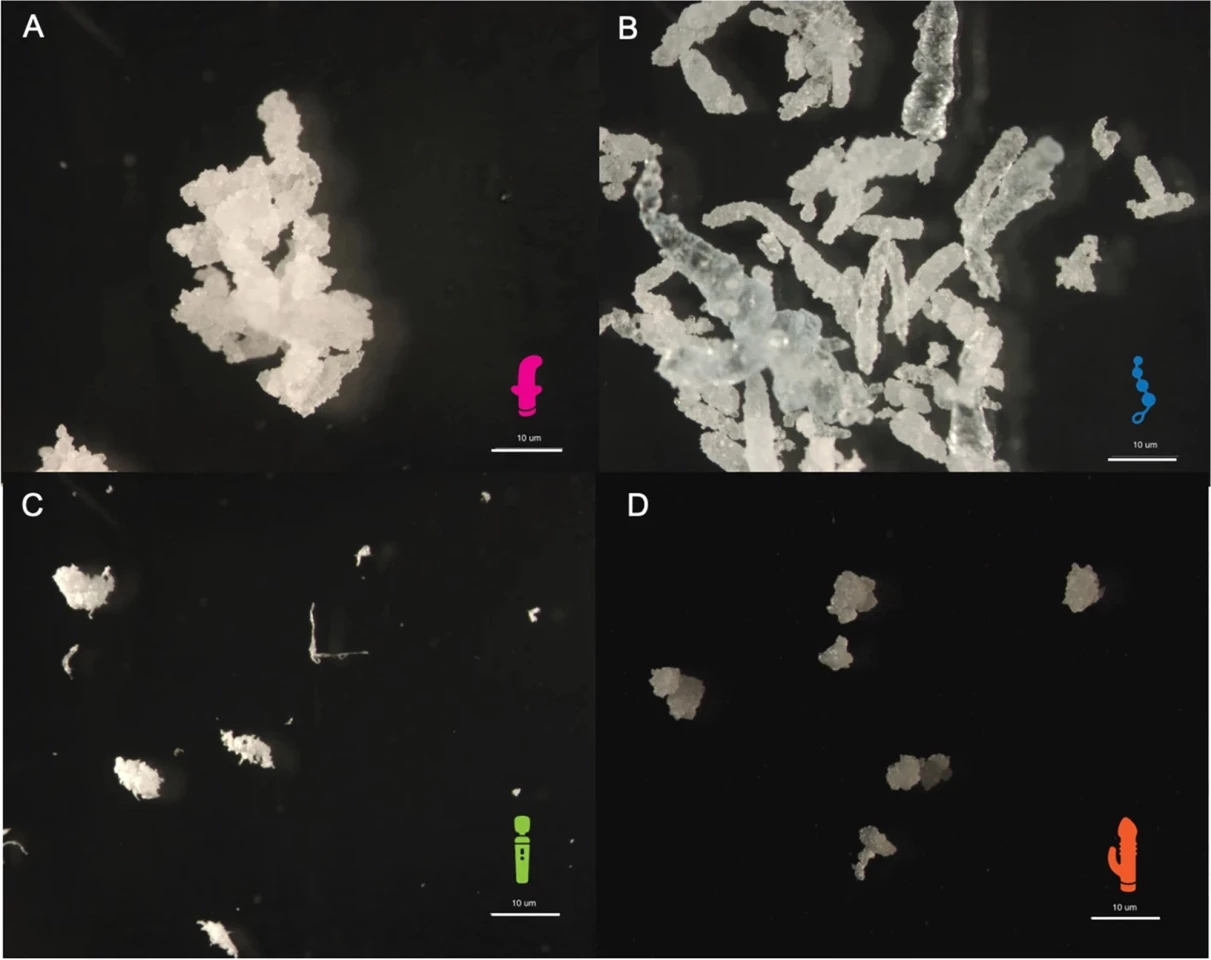A study has found that sex toys are an overlooked source of microplastics and phthalates, both of which can be toxic. Given their intimate use, the researchers say their findings highlight the need for greater regulation of the sex toy industry to ensure consumer safety.
Microplastics have made big news, being found everywhere, from the tops of remote mountains to the bottom of the oceans. These tiny pieces of plastic debris, resulting from the disposal and breakdown of consumer products and industrial waste, have been linked to multiple health issues.
Now, a study led by researchers at Duke and Appalachian State universities has exposed another, more personal source of microplastics: sex toys.
“Our studies indicate that sex toys can break down into microplastics and the materials contain phthalates that have been associated with health concerns,” said the researchers.
Although the topic of sex is taboo in some cultures, that hasn’t stopped the worldwide use and ownership of sex toys from rising. According to BedBible, the global sex toy market has grown steadily from 2016, when it was US$10.07 billion, to 2023, where it’s worth $40.6 billion. The market is predicted to exceed $80 billion by 2030.
With studies from 2009 showing that almost half (44.8%) of US heterosexual men and more than half (52.5%) of heterosexual women had used a vibrator at some point in their life, sex toys represent a substantial product category, and consumers expect them to be safe, especially considering that they’re used internally.
The researchers examined the possibility that Americans who use some sex toys may be exposed to hazardous materials, thereby posing potential health risks. They analyzed four different toy models: a dual vibrator, an external vibrator, anal beads, and an anal toy. These products were purchased in triplicate at different times to account for sample and batch variability.
They used an abrasion machine to examine the exposure potential of these products for nano- and microplastics. Essentially, the product was pressed onto an abradant, in this case, a glass file, which rotates in an enclosed space, allowing for the collection of microplastics for analysis. To avoid external contamination, lab users wore cotton lab coats and clothing, and the glass file was cleaned with ethanol after every test.
The anal toy released the most microplastics, followed by the anal beads, then the dual vibrator, with the external vibrator releasing the least. Using spectroscopy to identify the materials used in each toy, the anal toy was found to contain polyethylene terephthalate (PET), the anal beads polyvinyl chloride (PVC), the external vibrator a silicone blend (polydimethylsiloxane or PDMS), and the dual vibrator a rubber mixture (polyisoprene).

When the researchers analyzed the microparticles using gas chromatography-mass spectrometry (GC-MS), they found numerous phthalates in all four sex toys, in concentrations spanning over three orders of magnitude. The external vibrator contained the greatest number of individual phthalates – seven – but at low concentrations. Both the dual vibrator and anal beads only had di-n-octyl phthalate (DnOP) but at concentrations higher than the weight percentage limit allowed in children’s toys by the US Consumer Product Safety Commission (CPSC). The CPSC restricts levels of eight phthalates in children’s toys and objects to less than or equal to 0.1% of the mass of the plasticized material. All four sex toys contained phthalates either over the CPSC limit for DnOP or banned in the European Union by the European Chemicals Agency (ECHA).
A 2021 study found phthalates to be endocrine disruptors, where chronic exposure adversely affected the endocrine system and functioning of multiple organs, producing long-term negative impacts on the success of pregnancy, child growth and development and reproductive systems in both children and adolescents. While children carry higher concentrations of the man-made chemicals, adults could still be affected, although studies on the effects of phthalates on adults are scarce.
“[T]he work presented here does not claim to represent a risk assessment of sex toys as a class of products; rather, this synthesis and presentation of new data is presented to demonstrate potential for exposure based on the observed presence, and demonstrated release, of substances that have been tested by others and found concerning or definitely hazardous,” the researchers said.
The researchers say that their study’s findings highlight the need for stricter regulation of the sex toy industry. Currently, sex toys are commonly misclassified by the CPSC as ‘novelty items’ or ‘massagers’, meaning they’re exempt from regulation. Separate from the CPSC, the FDA classifies a vibrator as a medical device “for therapeutic use in the treatment of sexual dysfunction or as an adjunct to Kegel’s exercise.”
“Although there is a need for therapeutic devices in protecting pelvic floor health, many people do not purchase sex toys with this intended use,” say the researchers. “Manufacturers avoid regulation under FDA medical device jurisdiction by including ‘for novelty use only’ on labels, implying that the product is intended as a ‘gag gift’ with no practical use.”
They recommend that future studies incorporate real or synthetic bodily fluids, such as personal lubricant, with realistic abrasion tests to ascertain whether they influence the transport and availability of microplastics and phthalates.
Overall, the researchers hope their study will motivate further study into this sensitive topic, enabling regulatory agencies to take appropriate evidence-based action to ensure consumer safety.
Some of the study’s authors will discuss their research in a symposium at the 2023 Society for Risk Analysis Annual Conference in Washington DC on 13 December.
The study was published in the journal Microplastics and Nanoplastics.
Source: Society for Risk Analysis






